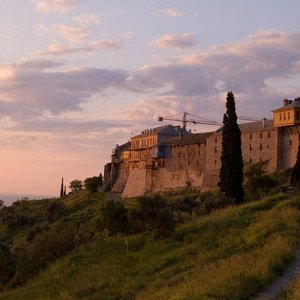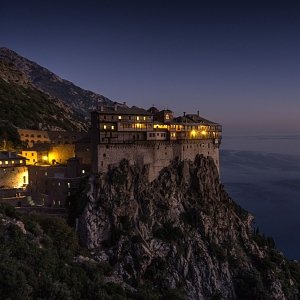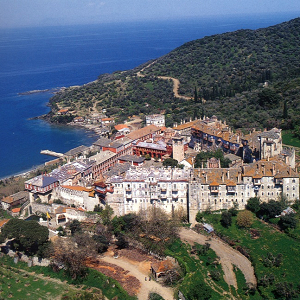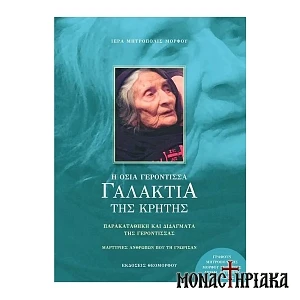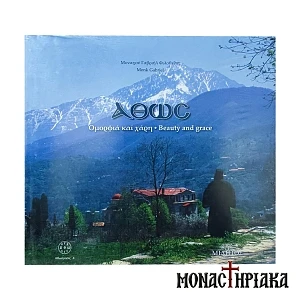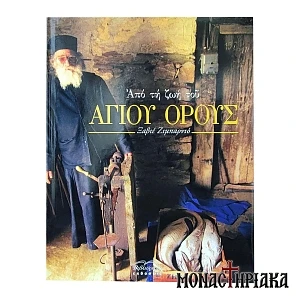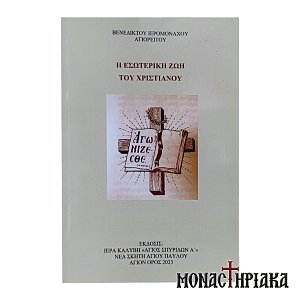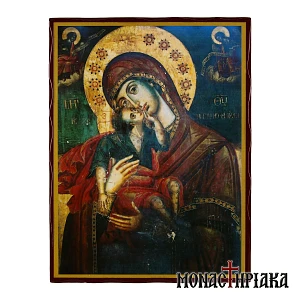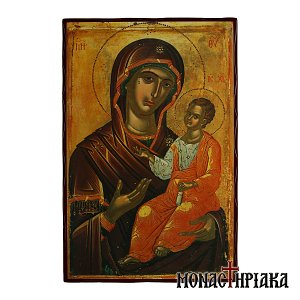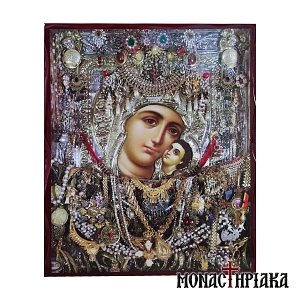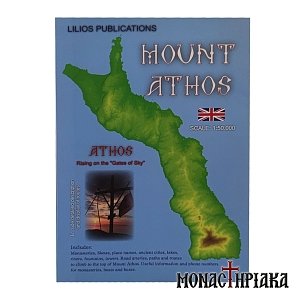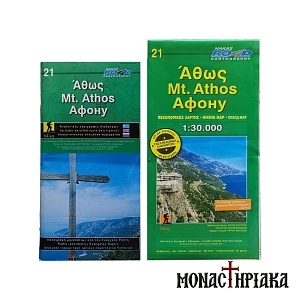The location of the Konstamonitou Monastery and the communication with other Monasteries
The Holy Patriarchal and Stavropegic Monastery of Konstamonitou is located in a lonely location, in the unspoilt forest of Kriovouni, near the center of the Athonian peninsula, in the area of the Sigitiko gulf.
To reach the Monastery, a pilgrim has to walk for about an hour from the mountain, passing through an olive grove and then through a chestnut forest. The communication of the Konstamonitou Monastery with other monasteries is not easy due to the inaccessible area and its isolation.
However, there are some paths to Zografou Monastery or Vatopedi Monastery. Specifically, the route to the Zografou Monastery takes about 1.5 hours and crosses a beautiful path, through a lush forest.
The Holy Monastery of Konstamonitou is in the 20th (last) position in the hierarchy of the Monasteries of Mount Athos.
The Holy Monastery of Konstamonitou through the centuries: a brief history
The founder of the Konstamonitou Monastery
Regarding the history of the Monastery, there are various theories about its foundation. According to a newer tradition, the Monastery was founded by Emperor Constantine the Great and completed by his son, Constantius.
Other sources state that the establishment of the monastery was carried out by a monk who came from Kastamonas of Paphlagonia or Kastamonas of Pontos. In addition, there are testimonies that mention as the founder of the Monastery a scion of a rich family of Constantinople.
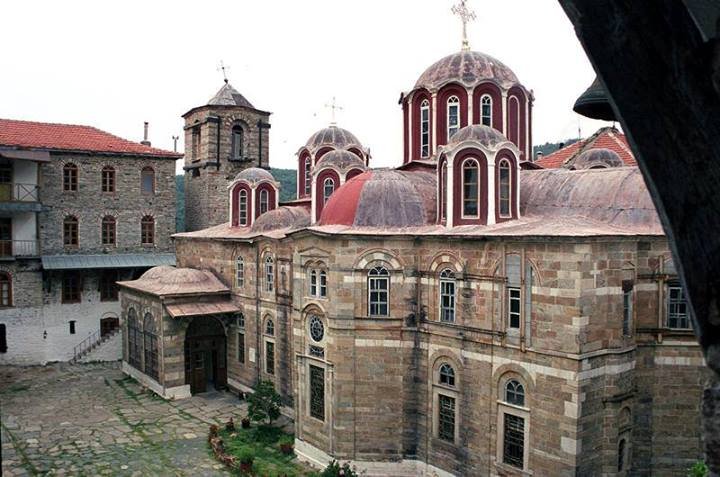
The reconstruction of the Holy Monastery of Konstamonitou
Around the end of the 18th century, the Monastery of Konstamonitou followed the communal administration system with the seal of Patriarch Neophytos VII. However, the substantial reconstruction of the monastery began in 1818 during the hegemony of Chrysantho from Epirus, at the expense of Ali Pasha and with the mediation of Kyra Vasiliki. Then the eastern wing of the Monastery was rebuilt.
The reconstruction of the Monastery continued during the reign of Simeon Stageiritis. Abbot Simeon secured financial resources for the Monastery and rebuilt the Church and the northern wing.
The Church of the Monastery, which is dedicated to the memory of Saint Stephen, is located in the center of the courtyard and was erected in 1867, on the ruins of the older Church.
The icon of Panagia Antiphonitria
The architecture of the Holy Monastery of Konstamonitou follows the athonite model. Its walls are decorated with many portable icons, several of which have great historical and cultural value. The icon of the Theotokos of Antiphonitria, who performed a great miracle in the Monastery in 1020, as reported according to tradition, stands out.
The Chapels and metochia of the Monastery
The Holy Monastery of Konstamonitou has a total of nine chapels, four inside the monastery and five outside it.
One of the chapels worth seeing is that of Panagia Portaitissa, located in the south wing of the Monastery above the entrance and built in 1871. The chapel is adorned by a wood-carved iconostasis of particular aesthetic value and houses an icon of Panagia Portaitissa, which she is also miraculous.
Also, on one floor of the southeast wing we find the chapel of All Saints (Agion Panton) and on another floor we find the largest chapel of the Monastery, dedicated to Saint Constantine. The chapel of Saint Nikolaos is located on the north side of the Monastery enclosure.
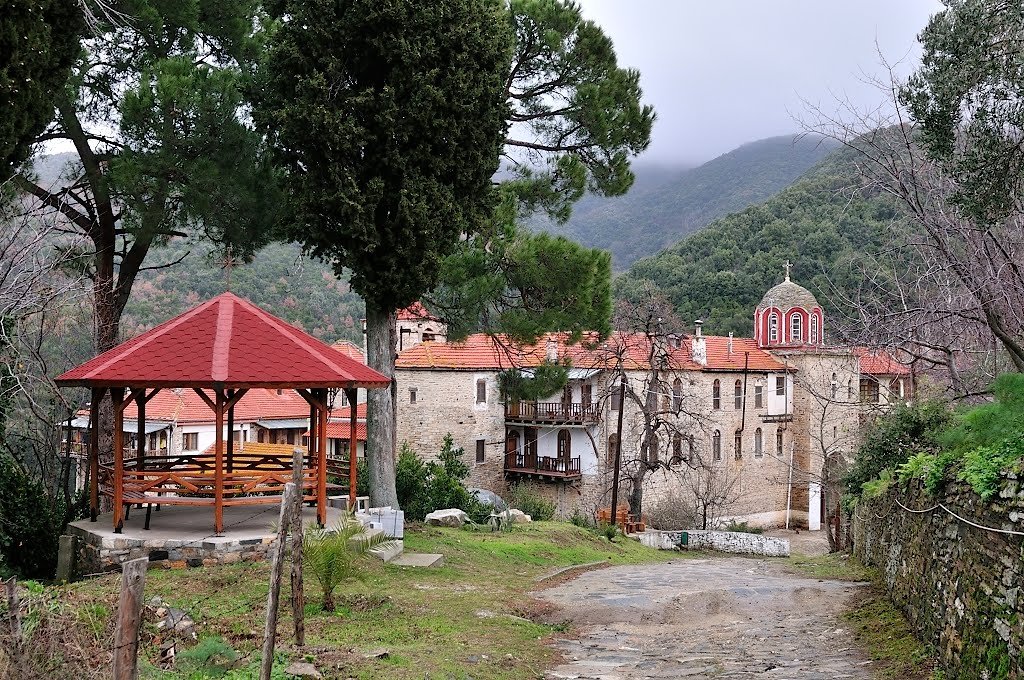
Besides the chapels of the Monastery, there are other chapels in the area. The chapel of Panagouda, with its remarkable Byzantine frescoes, is located outside the monastery. On the site of the old monastery is the chapel of Saint Antonios with a special wooden iconostasis dating back to 1670. The chapel of the Holy Trinity is located in a special position in a very beautiful spot, while the chapel of Saint Nikolaos is located in Arsana of the monastery. In addition, there is a chapel in the cemetery of the monastery.
Finally, it is worth mentioning the Cemetery Church of the Konstamonitou Monastery. This Church is a short distance from the Monastery, facing southeast and is dedicated to the memory of the Archangels Michael and Gabriel.
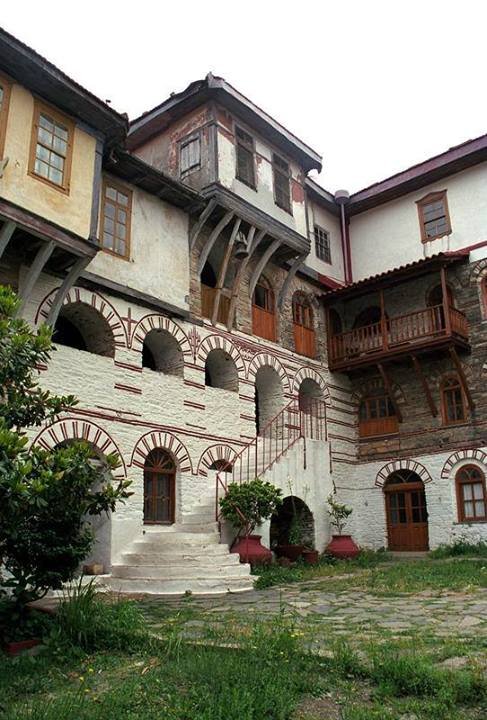
The Konstamonitou Monastery has a cell in Karyes, which is essentially the representative office of the Monastery, as well as two Kathismata in the wider area of the Monastery.
The relics of the Holy Monastery of Konstamonitou: miraculous icons, ecclesiastical heirlooms and relics of Saints
In the sacristy of the Konstamonitou Monastery, a Byzantine cross of excellent art, a piece of Sacred Wood, as well as relics of many Saints are kept in reliquaries.
There is also a silver-gold plated Gospel that comes from Epirus and was made in 1820 as a gift from Kyra Vasiliki. The Monastery's collection of ecclesiastical utensils, gold and silver seals, as well as official documents is also rich.
What stands out among the relics of the Monastery are the three miraculous icons of Saint Stephen, Our Lady of Antiphonatria and Our Lady of Odigetria.
Finally, in the library of the Monastery, more than 100 manuscripts, 14 parchments and more than 1000 ancient copies are kept.
In general, the Holy Patriarchal and Stavropegic Monastery of Konstamonitou is a remarkable Monastery on Mount Athos, with a unique architectural and religious significance. Visiting it can provide an experience of spiritual upliftment and appreciation of the history and tradition of Mount Athos.
Contact with Monastery of Konstamonitou:
Phone: +30 23770 23228, +30 23770 23228
Email: -

